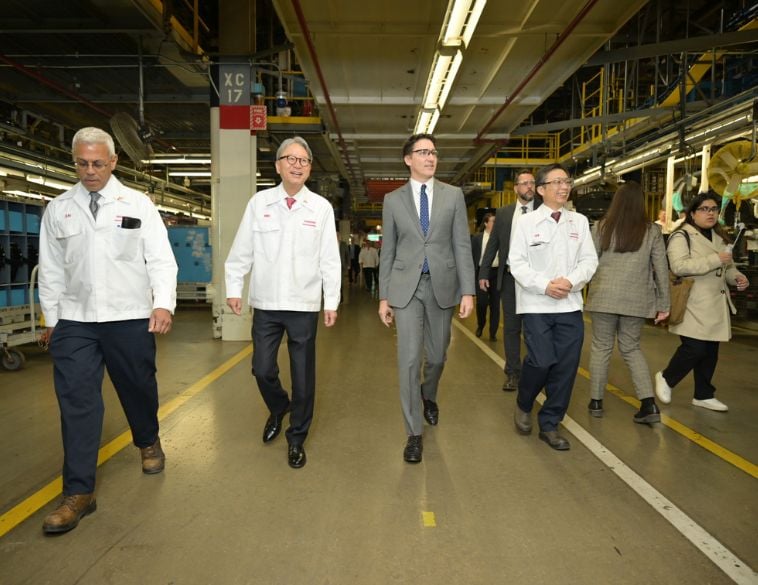Those who aren’t proactive will be left behind.
Ready or not, the automotive future is coming, and it’s going to have a considerable impact when it arrives. According to Canada’s Automotive Future, a report from KPMG, all major automakers will rapidly accelerate their production of electrically-powered vehicles over the next five years, along with advancing autonomous features.
The report was issued before COVID-19 began shutting down facilities worldwide, and that may have some effect on the timeline, but of course, this massive automotive shift has been in the works for a while. The pandemic may have slowed things down, but the electric/autonomous path is still moving ahead.
Electrified vehicles include battery-only (EVs), hybrids, plug-in hybrids (PHEV), and hydrogen fuel cells. KPMG predicts there could be as many as 13 million produced annually around the globe by 2025 from the top twelve OEMs, including Tesla. Volkswagen has already stated it intends to retire the internal combustion engine by then, and the report suggests VW could be turning out 1.5 million EVs by itself by then.
Federal and provincial commitments
In Canada, the Quebec government has committed to zero vehicle emissions by 2050, while British Columbia is targeting 30% of all vehicle sales to be zero-emission by 2030, and 100% by 2040. The report said the federal government is investing over $300 million in low- and zero-emission infrastructure and offers purchase incentives of up to $5,000. Quebec and B.C. also offer incentives. Ontario previously provided the most generous EV incentives, but these were dropped in 2018.
But rebates aren’t popular with all.
I think incentives are not necessarily an ideal thing, they’re never going to last that long.
— Peter Hatges, Partner and National Industry Leader, KPMG’s automotive in Canada
“They’ll artificially change the price of the car, and consumers are price-sensitive. Unless you apply incentives uniformly, particularly across Canada with ten provinces and the territories, you have regional disparities, ” added Hatges.
“My view is if the government’s going to create incentives to encourage the utilization of EVs to protect the environment, it should probably work on the infrastructure.”
Charging is key
Public charging infrastructure tends to be top-of-mind with consumers – and that’s understandable, given we’re all used to being able to fill up with gas almost anywhere. And yet studies have shown that almost 80% of EV owners charge their vehicles at home.
It’s convenient and inexpensive, and it can be done overnight when the vehicle isn’t needed. That’s still an important piece of the puzzle since Level 3 (DC) fast-chargers are very expensive to install. KPMG estimates that of roughly 7,700 public charging stations across Canada, only about 500 are quick-charge. Tesla’s stations are fast-charge, but they can only be used with Tesla vehicles.
Dealers that sell EVs already have stations for them, but those whose OEMs don’t yet produce them but plan to, or don’t currently sell them in the dealer’s province, will eventually need to consider the space and financial requirements needed for them.
Cars that think for themselves
Many future EVs are already being planned to have higher levels of autonomous features, but the “building blocks” needed for full autonomy are already being rolled out on conventional models. Here it will be all about dealership training, including how to diagnose and repair these systems.
Even now, customers need levels of information they haven’t required in the past. Many vehicles have adaptive cruise control and lane centring, and some now combine these into semi-autonomous features, ranging from simple driver assist to complex systems that work with GPS and map roads, such as Cadillac’s Super Cruise or Tesla’s Autopilot.
Customers who have never used any of these features, or are moving up into more complex ones than they’ve operated prior, will need extra time from their salespeople to know exactly how to use them, and especially to know their limitations, since nothing yet is a fully-autonomous system.
According to the report, more than 90% of crashes are caused by human error and vehicles that can sense danger and make decisions much faster than a human driver can create “tremendous improvements” in road safety.
Hatges also sees an effect on congestion. “The implication is route and traffic management,” he said. “The number of vehicles on the road are really taxing the capacity, and money spent on route optimization is a dollar saved in expanding the roadway or reducing the toll on heavily-used roads. It’s money that’s spent with a benefit. That is the real practical implication of this.”
In summing up, KPMG said that there’s no turning back from electrification and that as demand for EVs grows, “Canada has a lot to offer this burgeoning new segment.” But it also needs to keep sight of key considerations the company outlined…
Governments need to commit the right investment and infrastructure, which will help them seize the opportunity to benefit from technological changes in traffic management. They must also cut down on bureaucracy to attract jobs and investment.
Anyone who relies on conventional vehicles for their livelihood must not just brace for change, but actively seek it out so they are not left behind.
Educational institutions, governments, and industry must collaborate to train a long-term supply of auto workers for these new technologies.
Automakers must be ready to make investments in EV divisions, create new partnerships in the supply chain, and continue to shift toward new technologies.


